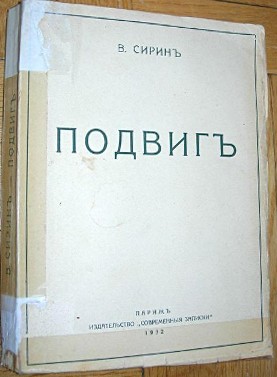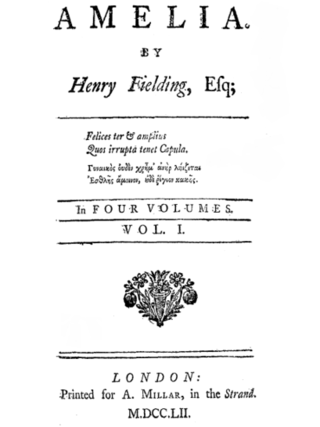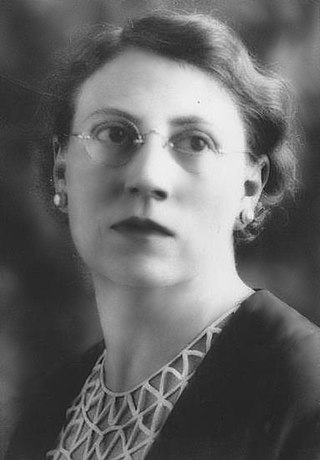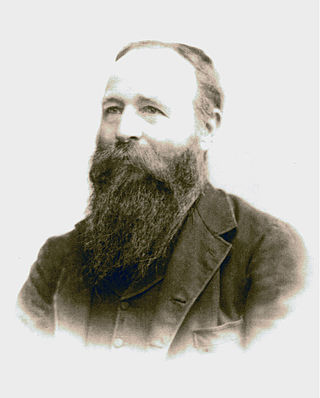
Traditionally, conflict is a major element of narrative or dramatic structure that creates challenges in a story by adding uncertainty as to whether the goal will be achieved. In works of narrative, conflict is the challenge main characters need to solve to achieve their goals. However, narrative is not limited to a single conflict. In narrative, the term resolution refers to the closure or conclusion of the conflict, which may or may not occur by the story's end.

Ada Cambridge, later known as Ada Cross, was an English-born Australian writer. She wrote more than 25 works of fiction, three volumes of poetry and two autobiographical works. Many of her novels were serialised in Australian newspapers but never published in book form. While she was known to friends and family by her married name, Ada Cross, her newspaper readers knew her as A.C. She later reverted to her maiden name, Ada Cambridge, and that is how she is known today.

Guy Newell Boothby was a prolific Australian novelist and writer, noted for sensational fiction in variety magazines around the end of the nineteenth century. He lived mainly in England. He is best known for such works as the Dr Nikola series, about an occultist criminal mastermind who is a Victorian forerunner to Fu Manchu, and Pharos, the Egyptian, a tale of Gothic Egypt, mummies' curses and supernatural revenge. Rudyard Kipling was his friend and mentor, and his books were remembered with affection by George Orwell.

Obernewtyn is the first novel in the Obernewtyn Chronicles series by Australian author Isobelle Carmody. Carmody began writing it at the age of fourteen, and reworked the novel through high school and university. Much of the inspiration for the protagonist, Elspeth Gordie, comes from her own life experiences. It was published by Penguin Books in Australia in 1987 and shortlisted for the Book of the Year for Older Readers in the Children's Book Council of Australia Awards.

Glory is a Russian novel written by Vladimir Nabokov between 1930 and 1932 and first published in Paris.

Amelia is a sentimental novel written by Henry Fielding and published in December 1751. It was the fourth and final novel written by Fielding, and it was printed in only one edition while the author was alive, although 5,000 copies were published of the first edition. Amelia follows the life of Amelia and Captain William Booth after they are married. It contains many allusions to classical literature and focuses on the theme of marriage and feminine intelligence, but Fielding's stance on gender issues cannot be determined because of the lack of authorial commentary discussing the matter. Although the novel received praise from many writers and critics, it received more criticism from Fielding's competition, possibly resulting from the "paper war" in which the author was involved.
Literary realism is a literary genre, part of the broader realism in arts, that attempts to represent subject-matter truthfully, avoiding speculative fiction and supernatural elements. It originated with the realist art movement that began with mid-nineteenth-century French literature (Stendhal) and Russian literature. Literary realism attempts to represent familiar things as they are. Realist authors chose to depict every day and banal activities and experiences.

Marjorie Faith Barnard was an Australian novelist and short story writer, critic, historian and librarian. She went to school and university in Sydney, and then trained as a librarian. She was employed as a librarian for two periods in her life, but her main passion was writing.

Soon I Will Be Invincible is a novel by Austin Grossman, published by Pantheon Books and released on June 5, 2007. The novel uses two alternating first person narratives—the first told from the point of view of Fatale, a female cyborg recruited by the superhero group The New Champions as they investigate the disappearance of a superhero named CoreFire. The other narrative is told from the point of view of Dr. Impossible, a supervillain possessing super-human strength and intellect who suffers from Malign Hypercognition Disorder. The plot follows Impossible's thirteenth attempt to take over the world after escaping from prison.

Homeless People is a novel written by Stefan Żeromski in 1899 in Zakopane, Poland, published for the first time in 1900. It introduces readers to the life and social work of the young doctor Tomasz Judym, as well as his love of Joanna Podborska. The novel is set at the end of the 19th century and presents the concept of personal devotion and working for the common people.

Frank Atha Westbury, who wrote under the pen names of "Atha" and "Atha Westbury", was a popular and prolific author of mystery adventure novels, children's stories and poetry in late 19th century Australia and New Zealand. Most of his fiction was serialised in newspapers and journals between 1879 and 1905. His two major works were: The Shadow of Hilton Fernbrook, A Romance of Maoriland (1896) and Australian Fairy Tales (1897), which won him a place as one of the better-known writers for children in Victorian-era Australia. Many of his novels were adventure romances set in New Zealand at the time of the New Zealand Wars of the 1860s, which the author experienced as a soldier in the British Army.

Sweet Tooth is a novel by the English writer Ian McEwan, published on 21 August 2012. It deals with the experiences of its protagonist, Serena Frome, during the early 1970s. After graduating from Cambridge she is recruited by MI5, and becomes involved in a covert programme to combat communism by infiltrating the intellectual world. When she becomes romantically involved with her mark, complications ensue.

A Bride from the Bush is the first novel written by E. W. Hornung. He started writing the book while working as a tutor for Charles Joseph Parsons in Mossgiel Station, New South Wales, Australia. The novel was initially published by Smith, Elder & Co. as a serial in the Cornhill Magazine, and then published in book format by the same company in October 1890. As with Tiny Luttrell and The Unbidden Guest, two of Hornung's other early novels, A Bride from the Bush points out flaws in British society by presenting the country through an Australian perspective. A reviewer from The New York Times called the novel "a most piquant contrast between civilization and crudity". The writer Thomas Alexander Browne called the titular character of A Bride from the Bush "a libel to Australian womankind". A Punch editor made the opposite claim, arguing that the protagonist of the novel is more kind-hearted and attractive than actual Australians.
In Answer to Various Bards is a poem by Australian writer and poet Andrew Barton "Banjo" Paterson. It was first published in The Bulletin magazine on 1 October 1892 in reply to fellow poet Henry Lawson's poem, In Answer to "Banjo", and Otherwise.

Materfamilias (1898) is a novel by Australian writer Ada Cambridge.
Gwen Kelly was an award-winning Australian novelist, short story writer and poet, whose fourth novel, Always Afternoon, was made into a television mini-series in 1988. She was considered by some to be one of the "major Australian writers", whose novels are "an intimate chronicling of women's lives and of our yesterdays", "probing stereotypical Australian attitudes and behaviour".

Enid Elizabeth Backhouse was an Australian novelist, scriptwriter and playwright, best known for her family history Against Time and Place.
John George Haslette Vahey was a versatile and prolific Northern Irish author of detective fiction in the genre's Golden Age in the 1920s and 1930s. Although his work has remained largely out of print since the end of the golden age, he is now enjoying a resurgence of popularity, and some of his work is again in print, or available as e-books.

Catherine Baker (1861–1953) was an Irish-born Australian teacher best known for championing the work of her friend Joseph Furphy, whose novel Such Is Life had received an indifferent reception upon its initial publication in 1909 but was later embraced by critics and the public. Miles Franklin incorporated Baker's recollections into the essay "Who Was Joseph Furphy?", which won the S. H. Prior Memorial Prize in 1939. Baker was appointed an OBE in 1937 for her efforts in promoting Furphy's work and to broader Australian literature. She was an influential part of the Australian literary scene, supporting, writing to and encouraging writers such as Ada Cambridge, Victor Kennedy, Edith Coleman, the poet Marie E. J. Pitt, journalist Alice Henry and the poet John Shaw Neilson. She was made a life member of the Henry Lawson Society, and honored with a bronze plaque by the society in 1936. Shortly before her death in 1953 she was made vice-president of the Australian Council for Civil Liberties.

Doctor Nikola (1896) is a novel by Australian writer Guy Boothby. It was his second novel to feature his recurring character Dr. Nikola. It was originally serialised in The Windsor Magazine : An Illustrated Monthly for Men and Women over 8 issues in 1896, and in The Argus newspaper in Melbourne before it was then published in book form in the United Kingdom by Ward, Lock and Bowden in the same year.
















